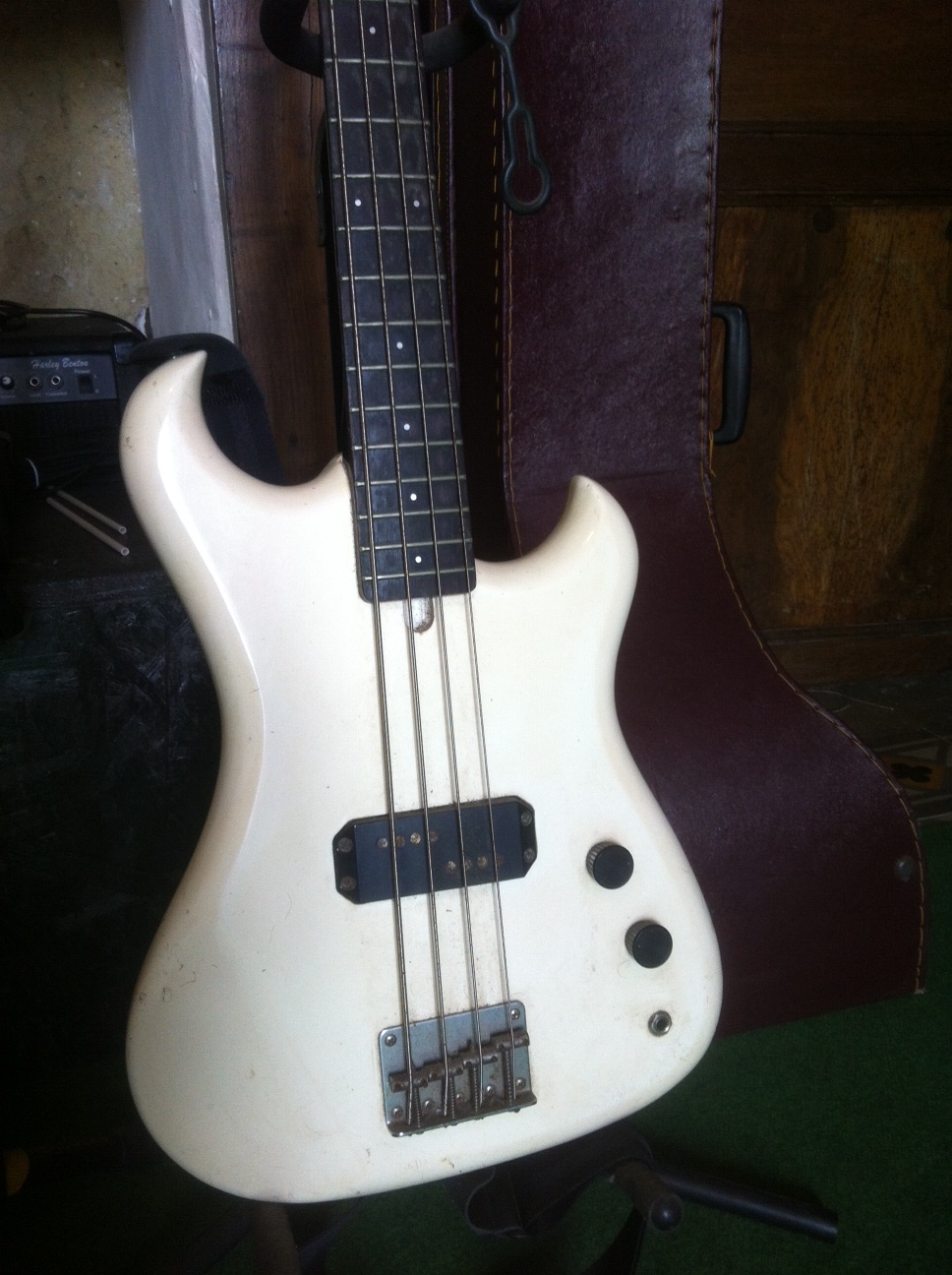Anybody Play Westone Guitar

Aloha!My regular readers know I love vintage Japanese guitars and basses, and today we are looking at another one: a really neat Westone Thunder 1 bass from 1982.In case you are not up to speed on Westone, here is a quick run-down on the brand. Matsumoku was a Japanese company that specialized in making guitars for many brands, including Aria, Epiphone, Vox and more.
They built very good instruments, including copies of popular American instruments that caused some legal difficulties.After building instruments for other companies for all of those years, in 1981 they decided to start their own brand and Westone was born. Their products were never a big hit and in 1987 Matsumoku sold the brand to a Korean company, and by 1991 the brand was gone. Not many of their guitars ere imported to the US, and it seems like most of their products went to the UK.If you look at this Thunder 1, the most obvious thing is that this looks an awful lot like an Aria Pro II Super Bass due to its clear-finished laminated ash, maple and walnut body. Not to mention the the 2-on-a-side tuners, and the brass nut and bridge. This is not a coincidence, as Matsumoku built those Super Basses too!
But, there are a few important differences. This is a bolt-neck bass, it only has 20 frets, and it has a P-Bass split coil pickup.
But it does not really matter, as this ends up being a smart-looking bass and it is a pretty fine instrument. Let’s take a closer lookThe neck is a 3-piece maple laminate with an ash overlay on the headstock, and it attaches to the body with a 4-bolt joint and a Westone Made in Japan-marked plate. It has a rosewood fretboard with simple dot inlays, and the aforementioned 20 frets are pretty hefty wire. The tuners look like Westone-branded Gotohs, and there is a silkscreened Westone logo on the headstock. It is a 34-inch scale bass, in case you were wondering.As I said the body is laminated, and there is a control cavity routed in the back to hold the volume and tone pots. It has its own profile, with shorter horns than the usual Precision Bass, and there is a belly contour carved out of the back. The pickup and electronics are passive, no battery is needed, though it would be easy to add a pre-amp thanks to the easy-access back panel.This one has not led a pampered life, and there is a bit of finish wear and the logo is wearing off.
The top strap pin has been relocated a few times, and does not appear to be original to the instrument. But it has good distance factor thanks to the clear finish, and it does not look too bad. The original frets are still in great shape and the pickup has plenty of output.And this Thunder 1 still plays well. It sounds just like a P-bass, and the action can be adjusted pretty low.
The nut is 1 5/8” wide, so the Fender experience is there, though it does seem a little neck-heavy, thanks to that shorter top horn. Maybe that is why the pin was moved. It weighs in at 9 pounds, 12 ounces, which is not too bad if you consider that this thing is built like a tank.I like it a lot and the best part is that these basses are not very expensive – nice ones can be had for around $200. I would not sell this one that cheaply, for sure.There were other variations of the Thunder 1: instruments with black or red finish have solid maple bodies, and Thunder 1A basses came with active electronics.
These variants are quite rare and I have not seen an unmolested one come up for sale in a long time.If you see one of these for a couple hundred bucks and it is still in good shape I say “buy it.” Trust me!Mahalo! I too have a Thunder 1. I used it on stage for 15 years, took it to the odd (very odd) festival and dropped it numerous times. Sweated buckets on it, bled over it, recorded a few albums on it, and generally abused it. The bad boy still plays well and apert from the volume and tone knobs falling off and getting lost, looks OK considering the mistreatment, just some laquer wear. It's as bullet proof as a bass guitar can be, bless it. I'll never sell it, but it currently resides with my grown up son who has been bitten by the bass bug.
When I pass from this plane, he will inherit it properly, if I haven't already given it to him in the mean time. Think it cost me about £80 in about 1988 second hand.
Westone Guitar Parts
Big money for me at the time. Thanks for the Westone story.